Inspired by @nekocode ResourceInspector, I figure out how to show the layout resource name in the screenshot captured by AS's layout inspector.

Firstly create a class LayoutIndicatorInflater
public class LayoutIndicatorInflater extends LayoutInflater {
private LayoutInflater mOriginalInflater;
private String mAppPackageName;
protected LayoutIndicatorInflater(LayoutInflater original, Context newContext) {
super(original, newContext);
mOriginalInflater = original;
mAppPackageName = getContext().getPackageName();
}
@Override
public LayoutInflater cloneInContext(Context newContext) {
return new LayoutIndicatorInflater(mOriginalInflater.cloneInContext(newContext), newContext);
}
@Override
public void setFactory(Factory factory) {
super.setFactory(factory);
mOriginalInflater.setFactory(factory);
}
@Override
public void setFactory2(Factory2 factory) {
super.setFactory2(factory);
mOriginalInflater.setFactory2(factory);
}
@Override
public View inflate(int resourceId, ViewGroup root, boolean attachToRoot) {
Resources res = getContext().getResources();
String packageName = "";
try {
packageName = res.getResourcePackageName(resourceId);
} catch (Exception e) {}
String resName = "";
try {
resName = res.getResourceEntryName(resourceId);
} catch (Exception e) {}
View view = mOriginalInflater.inflate(resourceId, root, attachToRoot);
if (!mAppPackageName.equals(packageName)) {
return view;
}
View targetView = view;
if (root != null && attachToRoot) {
targetView = root.getChildAt(root.getChildCount() - 1);
}
targetView.setContentDescription("layout res:" + resName);
if (targetView instanceof ViewGroup) {
ViewGroup viewGroup = (ViewGroup) targetView;
for (int i = 0; i < viewGroup.getChildCount(); i++) {
View child = viewGroup.getChildAt(i);
if (TextUtils.isEmpty(child.getContentDescription())) {
child.setContentDescription("layout res:" + resName);
}
}
}
return view;
}
}
Then create a helper class
public class LayoutIndicatorHelper {
public static void init(Application application) {
if (BuildConfig.DEBUG) {
application.registerActivityLifecycleCallbacks(new Application.ActivityLifecycleCallbacks() {
@Override
public void onActivityCreated(Activity activity, Bundle savedInstanceState) {
try {
Field inflaterField = ContextThemeWrapper.class.getDeclaredField("mInflater");
inflaterField.setAccessible(true);
LayoutInflater inflater = (LayoutInflater) inflaterField.get(activity);
LayoutInflater proxyInflater = null;
if (inflater != null) {
proxyInflater = new LayoutIndicatorInflater(inflater, activity);
inflaterField.set(activity, proxyInflater);
}
Class phoneWindowClass = Class.forName("com.android.internal.policy.PhoneWindow");
Field phoneWindowInflater = phoneWindowClass.getDeclaredField("mLayoutInflater");
phoneWindowInflater.setAccessible(true);
inflater = (LayoutInflater) phoneWindowInflater.get(activity.getWindow());
if (inflater != null && proxyInflater != null) {
phoneWindowInflater.set(activity.getWindow(), proxyInflater);
}
} catch (Exception e) {
e.printStackTrace();
}
}
@Override
public void onActivityStarted(Activity activity) {
}
@Override
public void onActivityResumed(Activity activity) {
}
@Override
public void onActivityPaused(Activity activity) {
}
@Override
public void onActivityStopped(Activity activity) {
}
@Override
public void onActivitySaveInstanceState(Activity activity, Bundle outState) {
}
@Override
public void onActivityDestroyed(Activity activity) {
}
});
}
}
}
Finally call LayoutIndicatorHelper.init in your Application's onCreate
public class MyApplication extends Application {
@Override
public void onCreate() {
super.onCreate();
LayoutIndicatorHelper.init(this);
}
}

